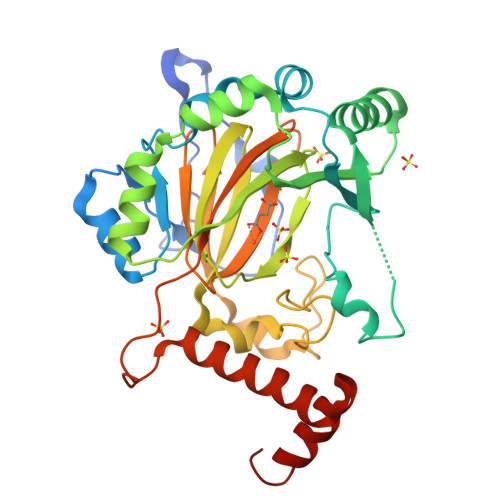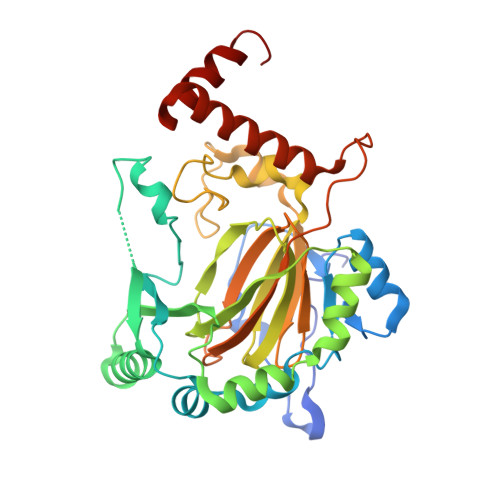Structural and Mechanistic Studies on the Inhibition of the Hypoxia-Inducible Transcription Factor Hydroxylases by Tricarboxylic Acid Cycle Intermediates.
Hewitson, K., Lienard, B., McDonough, M.A., Clifton, I.J., Butler, D., Soares, A.S., Oldham, N.J., McNeill, L.A., Schofield, C.J.(2007) J Biological Chem 282: 3293-3301
- PubMed: 17135241
- DOI: https://doi.org/10.1074/jbc.M608337200
- Primary Citation of Related Structures:
2CGN, 2CGO - PubMed Abstract:
In humans both the levels and activity of the alpha-subunit of the hypoxia-inducible transcription factor (HIF-alpha) are regulated by its post-translation hydroxylation as catalyzed by iron- and 2-oxoglutarate (2OG)-dependent prolyl and asparaginyl hydroxylases (PHD1-3 and factor-inhibiting HIF (FIH), respectively). One consequence of hypoxia is the accumulation of tricarboxylic acid cycle intermediates (TCAIs). In vitro assays were used to assess non-2OG TCAIs as inhibitors of purified PHD2 and FIH. Under the assay conditions, no significant FIH inhibition was observed by the TCAIs or pyruvate, but fumarate, succinate, and isocitrate inhibited PHD2. Mass spectrometric analyses under nondenaturing conditions were used to investigate the binding of TCAIs to PHD2 and supported the solution studies. X-ray crystal structures of FIH in complex with Fe(II) and fumarate or succinate revealed similar binding modes for each in the 2OG co-substrate binding site. The in vitro results suggest that the cellular inhibition of PHD2, but probably not FIH, by fumarate and succinate may play a role in the Warburg effect providing that appropriate relative concentrations of the components are achieved under physiological conditions.
Organizational Affiliation:
Department of Chemistry, University of Oxford, Mansfield Road, Oxford OX1 3TA, United Kingdom. kirsty.hewitson@reox.co.uk



















